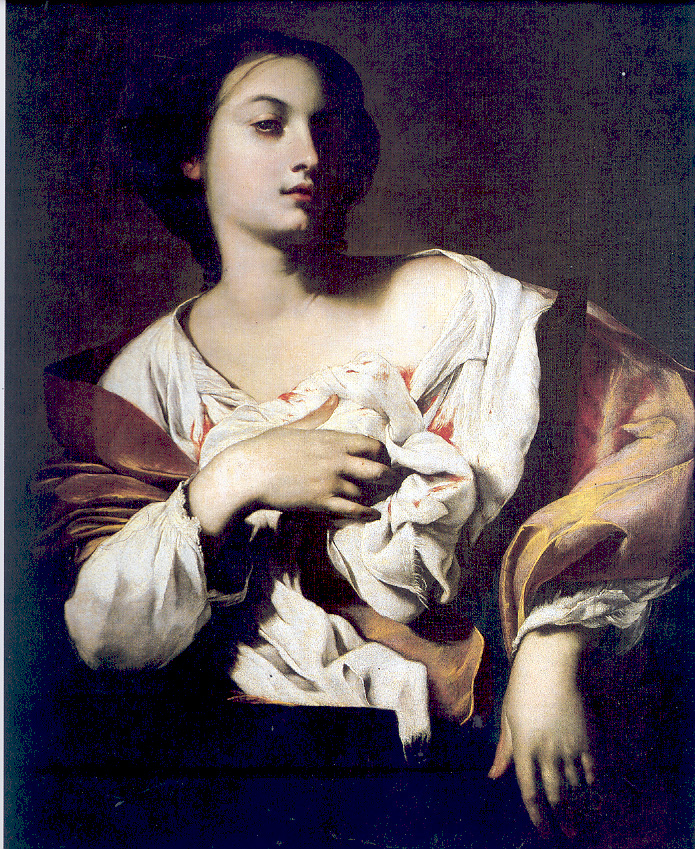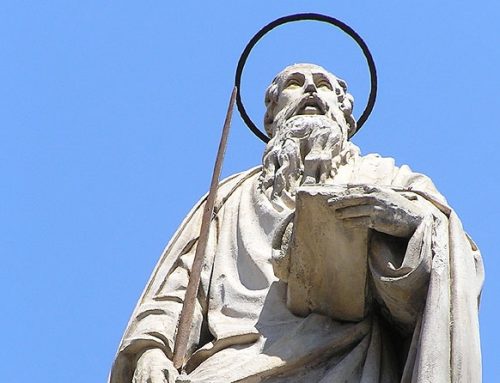HER FEAST DAY IS FEBRUARY 5.
The fame of her heroic virtue – put to trial in numerous ways – spread all throughout the whole of Christianity and was confirmed and venerated by millions of faithful even years after her death.
LIFE
Originating from Catania (Palermo), in the island of Sicily, Saint Agatha died as a martyr in the third century.
What is written about her life and martyrdom tells us of the numerous trials that she had to undergo which eventually culminated in her martyrdom under the persecution of Decius (Passio Santa Agathae) or Diocletian (Aldelmo, De laudibus virginitatis, chapter 42: PL 89, 142). However, the dates of her birth and martyrdom (probably circa 251 AD) remain uncertain.

The document Passio Santa Agathae tells of the persecution she underwent which led eventually to her martyrdom. She was arranged to marry the governor of Sicily. To this, she refused because ever since she was young she had believed that her life was consecrated to God alone. As a consequence of her refusal, she was called in to the tribunal and there she declared herself Christian and as a result, she was thrown to prison.
After a few days, she was again summoned to the tribunal and interrogated. She did the same thing again professing her faith in Jesus Christ.
Her resilience made the governor angry and once again she was thrown back to prison.
During this time, in prison, she receives a miraculous vision of Saint Peter in which she was able to seek comfort. The constancy of Saint Agatha’s profession of her faith juxtaposes well with the stubbornness of the governor who found himself always sending back Saint Agatha to prison until finally, she was condemned to death.
The fame of her heroic virtue – put to trial in numerous ways – spread all throughout the whole of Christianity and was confirmed and venerated by millions of faithful even years after her death.
THE DEVOTION TO SAINT AGATHA
The popular devotion to Saint Agatha has made her the Patron Saint of Catania and was a special intercessor during the volcanic eruptions of Mount Etna. Moreover, she was also considered Protector against fire.

Finally, she is also considered the Patron Saint of bell founders (as bells announce the occurrence of fire).
The relics of Saint Agatha were conserved first in Catania, then were transferred to Constantinople during the Saracen invasion. From Constantinople, the relics were definitively recovered in 1126.
The cult to Saint Agatha is widespread as confirmed by diverse documents and monuments: a good number of Churches are entrusted to her intercession. She is mentioned in the Jeromian Martyrology, in the Carthaginian Calendar, and in the Mozarabic Calendar, in the Greek synaxis and her name is also mentioned in the Roman Canon of the Mass, something probably attributed to Pope Saint Gregory (cfr. J. Jungmann, The Sacrifice of the Mass).
The liturgical documents from the sixth to the tenth centuries affirm the celebration of her feast day on the 5th of February.








Leave A Comment
You must be logged in to post a comment.